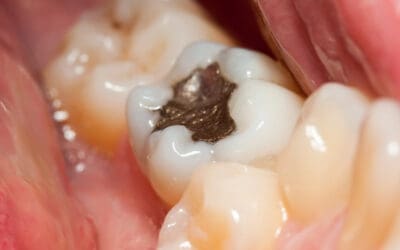What are the key differences between dental crowns and fillings? Dental crowns vs fillings primarily differ in their purpose and coverage; crowns encase the entire tooth to restore its shape and strength, while fillings are used to repair smaller areas of decay or damage. Understanding these differences can help in making informed decisions about dental care.
Dental Crowns vs Fillings: Purpose and Functionality
When considering dental crowns vs fillings, it’s essential to understand their distinct purposes and functionalities. Dental crowns are typically used to cover and protect a tooth that has been significantly damaged or weakened, often following a root canal or a large cavity. They act as a cap, restoring the tooth’s shape, size, and strength while improving its appearance. On the other hand, fillings are used to repair smaller areas of tooth decay or damage. They fill the cavity left by decay, preventing further deterioration and restoring the tooth’s normal function.
The choice between dental crowns vs fillings often depends on the extent of the damage to the tooth. Crowns are generally recommended when a tooth is too compromised to support a filling alone, providing a more comprehensive solution for long-term durability. Fillings, however, are suitable for minor repairs where the tooth structure is mostly intact. For more insights into different types of fillings, you can explore our detailed comparison in the article Dental Amalgam vs Composite Fillings: Pros & Cons.
Material Composition
When comparing dental crowns vs fillings, understanding the material composition of each is crucial. Dental crowns are typically crafted from a variety of materials, including porcelain, ceramic, metal alloys, and composite resin. These materials are chosen for their durability and ability to mimic the natural appearance of teeth. Porcelain and ceramic crowns are particularly popular for their aesthetic appeal, as they can be color-matched to the surrounding teeth. Metal alloys, on the other hand, offer exceptional strength and are often used for molars that endure significant chewing pressure.
Fillings, in contrast, are generally made from materials such as amalgam, composite resin, gold, or glass ionomer. Amalgam fillings, known for their strength and longevity, have been used for decades. Composite resins are favored for their ability to blend seamlessly with the natural tooth color, making them a popular choice for visible areas of the mouth. The choice between dental crowns vs fillings often depends on the extent of tooth damage and the desired aesthetic outcome. For more information on fillings, you can explore Arlington’s Best Dental Fillings.
Durability and Longevity
When considering dental crowns vs fillings, understanding the differences in durability and longevity is crucial. Dental crowns are typically crafted from robust materials like porcelain, metal, or ceramic, which can withstand significant pressure and wear over time. This makes them a long-lasting solution for teeth that have undergone extensive damage or decay. On the other hand, fillings are generally used for smaller cavities and are made from materials such as composite resin or amalgam. While fillings are effective for minor repairs, they may not offer the same level of durability as crowns, especially in areas of the mouth that experience heavy chewing forces. The choice between dental crowns vs fillings often depends on the extent of the tooth damage and the desired longevity of the dental restoration.
Procedure Complexity
When comparing dental crowns vs fillings, one of the key differences lies in the complexity of the procedures involved. Dental fillings are generally straightforward and can often be completed in a single visit. They involve removing decayed material from the tooth and filling the cavity with a suitable material. On the other hand, dental crowns are more complex and typically require multiple visits. The process involves reshaping the tooth, taking impressions, and fitting a custom-made crown over the existing tooth structure. This added complexity is due to the need for precision in crafting a crown that fits perfectly and functions like a natural tooth. For those seeking more information on dental procedures, Lighthouse Dental, an Arlington Dentist, provides valuable insights.
Cost Comparison
When considering dental crowns versus fillings, cost is a significant factor that can influence your decision. Generally, dental fillings are less expensive than crowns due to the materials used and the complexity of the procedure. Fillings are typically used for minor repairs and involve a straightforward process, which keeps costs lower. On the other hand, dental crowns are more costly because they cover the entire tooth and require more intricate work, including multiple visits and custom fabrication. The price difference also reflects the durability and longevity of crowns compared to fillings, as crowns are designed to withstand more wear and tear over time. It’s important to weigh these cost differences when deciding on the best option for your dental needs.
Aesthetic Considerations
When comparing dental crowns vs fillings, aesthetic considerations play a significant role in decision-making. Dental crowns are often chosen for their ability to cover the entire tooth, providing a uniform and natural appearance that can be matched to the color of surrounding teeth. This makes them an attractive option for front teeth or highly visible areas. On the other hand, fillings are typically used to restore smaller areas of decay and can be made from materials like composite resin, which can also be color-matched to the tooth. However, the extent of coverage and the material used can influence the overall aesthetic outcome, making it important to weigh these factors when considering dental crowns vs fillings.
Coverage Area
When considering dental crowns vs fillings, understanding the coverage area of each option is crucial. Dental crowns are designed to cover the entire visible portion of a tooth, providing comprehensive protection and support, especially for teeth that are significantly damaged or weakened. In contrast, fillings are used to fill cavities or small areas of decay within a tooth, addressing only the specific damaged portion. This fundamental difference in coverage area highlights how dental crowns vs fillings serve distinct purposes in dental restoration, catering to varying degrees of tooth damage and decay.
Maintenance Requirements
When considering dental crowns vs fillings, understanding the maintenance requirements for each can help in making an informed decision. Dental crowns typically require regular dental check-ups to ensure they remain intact and free from damage, as they cover the entire tooth and are more susceptible to wear over time. Fillings, on the other hand, generally need less maintenance but should still be monitored for any signs of cracking or leakage. Both dental crowns and fillings benefit from good oral hygiene practices, such as brushing and flossing, to prolong their lifespan and maintain oral health.
Suitability for Damage Type
When considering dental crowns vs fillings, understanding their suitability for different types of tooth damage is crucial. Dental crowns are typically used for more extensive damage, such as when a tooth is severely decayed, cracked, or weakened, providing a protective cap that restores the tooth’s shape and function. On the other hand, fillings are generally suitable for minor to moderate cavities or small areas of decay, where the primary goal is to fill the cavity and prevent further deterioration. The choice between dental crowns vs fillings largely depends on the extent of the damage and the specific needs of the tooth in question.
Conclusion
Understanding the key differences between dental crowns vs fillings can help you make informed decisions about your dental health. For more information, call 703-337-3994 or check out our Google Maps reviews.






